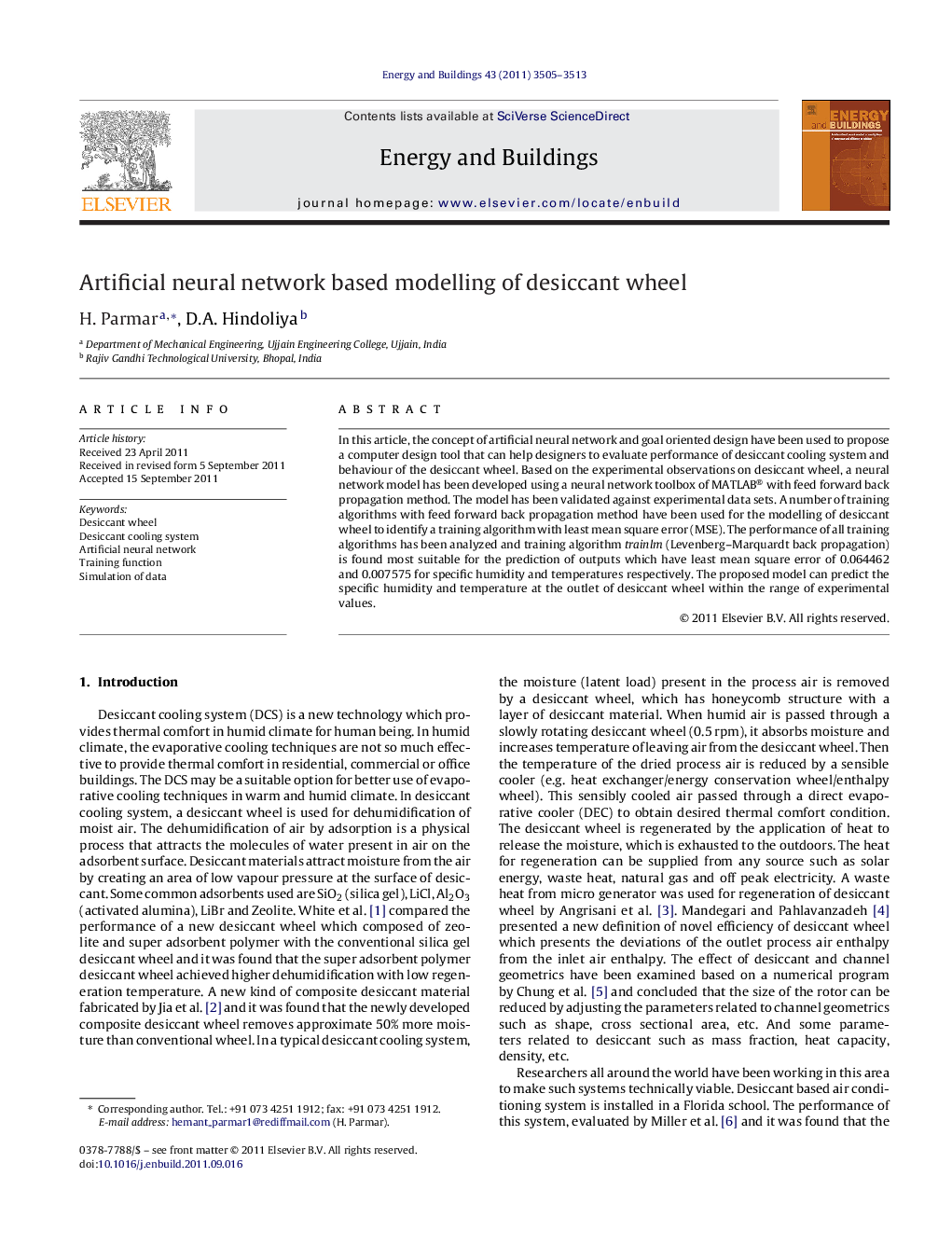| Article ID | Journal | Published Year | Pages | File Type |
|---|---|---|---|---|
| 264216 | Energy and Buildings | 2011 | 9 Pages |
In this article, the concept of artificial neural network and goal oriented design have been used to propose a computer design tool that can help designers to evaluate performance of desiccant cooling system and behaviour of the desiccant wheel. Based on the experimental observations on desiccant wheel, a neural network model has been developed using a neural network toolbox of MATLAB® with feed forward back propagation method. The model has been validated against experimental data sets. A number of training algorithms with feed forward back propagation method have been used for the modelling of desiccant wheel to identify a training algorithm with least mean square error (MSE). The performance of all training algorithms has been analyzed and training algorithm trainlm (Levenberg–Marquardt back propagation) is found most suitable for the prediction of outputs which have least mean square error of 0.064462 and 0.007575 for specific humidity and temperatures respectively. The proposed model can predict the specific humidity and temperature at the outlet of desiccant wheel within the range of experimental values.
► Described the working and mathematical modelling of desiccant cooling system. ► Fourteen training algorithms are classified in to seven categories and used for training of the network. ► Training algorithm trainlm suggested a most efficient algorithm among others. ► Described the performance of neural network using trainlm as the training function. ► Some mathematical relations are presented for expected output from the DCS system.
